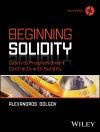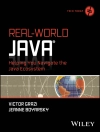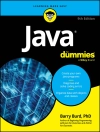Learn programming with Python by creating a text adventure. This book will teach you the fundamentals of programming, how to organize code, and some coding best practices. By the end of the book, you will have a working game that you can play or show off to friends. You will also be able to change the game and make it your own by writing a different story line, including new items, creating new characters, and more.
Make your own Python Text Adventure offers a structured approach to learning Python that teaches the fundamentals of the language, while also guiding the development of the customizable game. The first half of the book introduces programming concepts and Python syntax by building the basic structure of the game. You’ll also apply the new concepts in homework questions (with solutions if you get stuck!) that follow each chapter. The second half of the book will shift the focus to adding features to your game and making it more entertainingfor the player.
Python is often recommended as a first programming language for beginners, and for good reason. Whether you’ve just decided to learn programming or you’ve struggled before with vague tutorials, this book will help you get started.
What You’ll Learn
- Install Python and set up a workspace
- Master programming basics and best practices including functions, lists, loops and objects
- Create an interactive adventure game with a customizable world
Who This Book Is For
People who have never programmed before or for novice programmers starting out with Python.
Tabla de materias
1. Getting Started.- 2. Your First Program.- 3. Listening to your User.- 4. Decisions.- 5. Functions.- 6. Lists.- 7. Loops.- 8. Objects.- 9. Exceptions.- 10. Intermezzo.- 11. Building Your World.- 12. Making the World More Interesting.- 13. Worldbuilding, part 2.- 14. Econ 101.- 15. Endgame.- 16. Appendix A: Homework Solutions.- 17. Appendix B: Common Errors.
Sobre el autor
Phillip Johnson is a software developer based out of Columbus, Ohio. He has worked on projects ranging from call center queuing to bioinformatics and has used a wide range of technologies including Python, Java, Scala, and SQL. He blogs at Let’s Talk Data.












